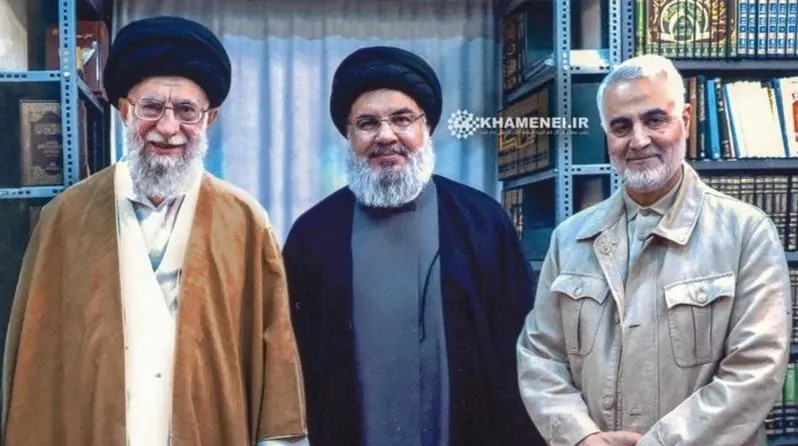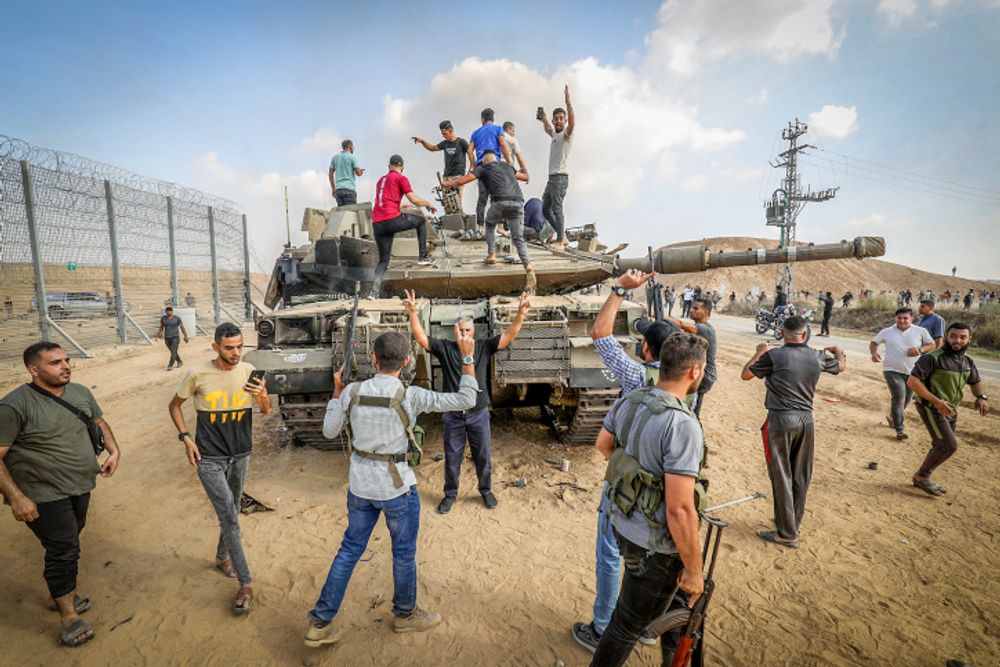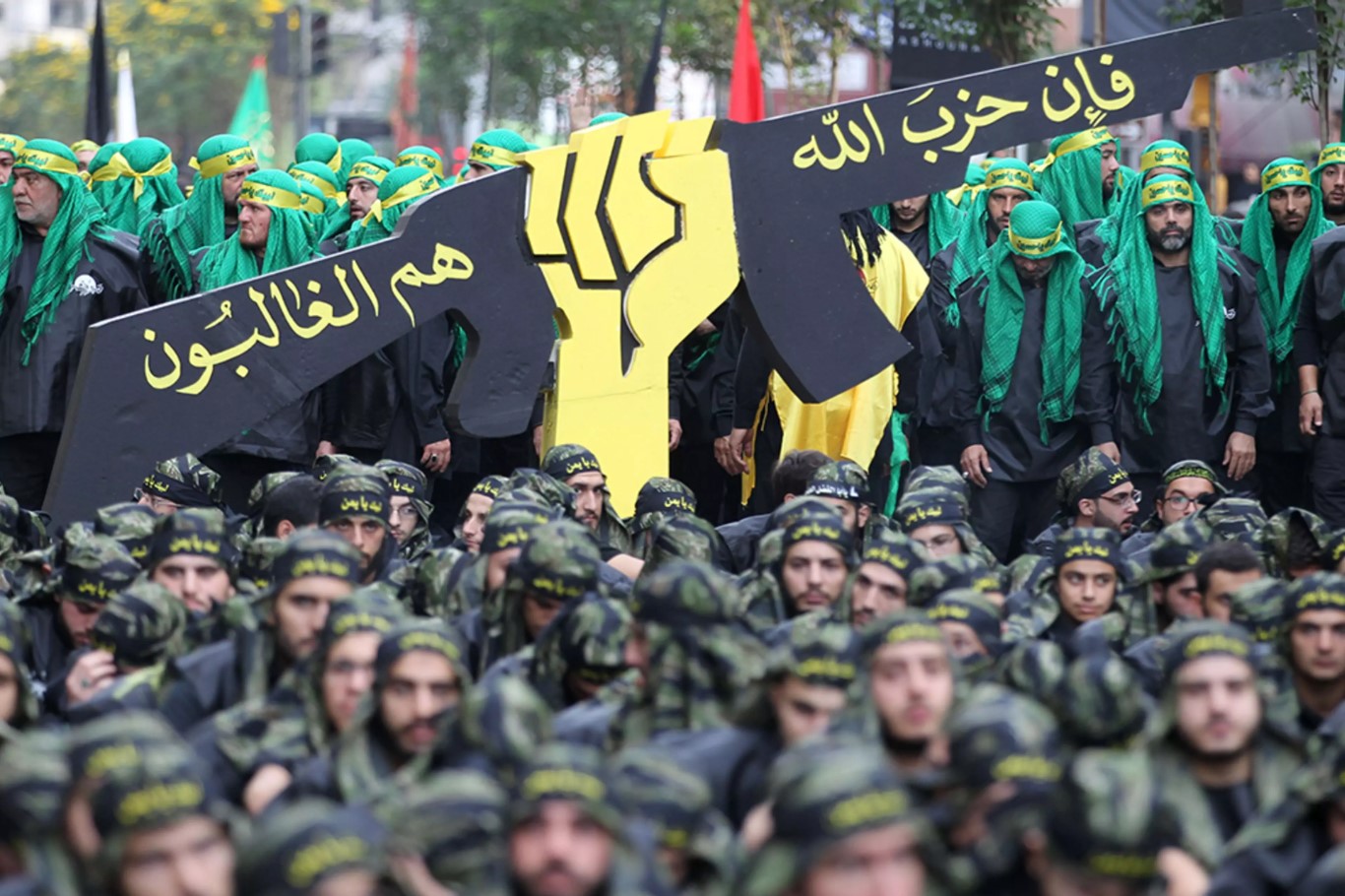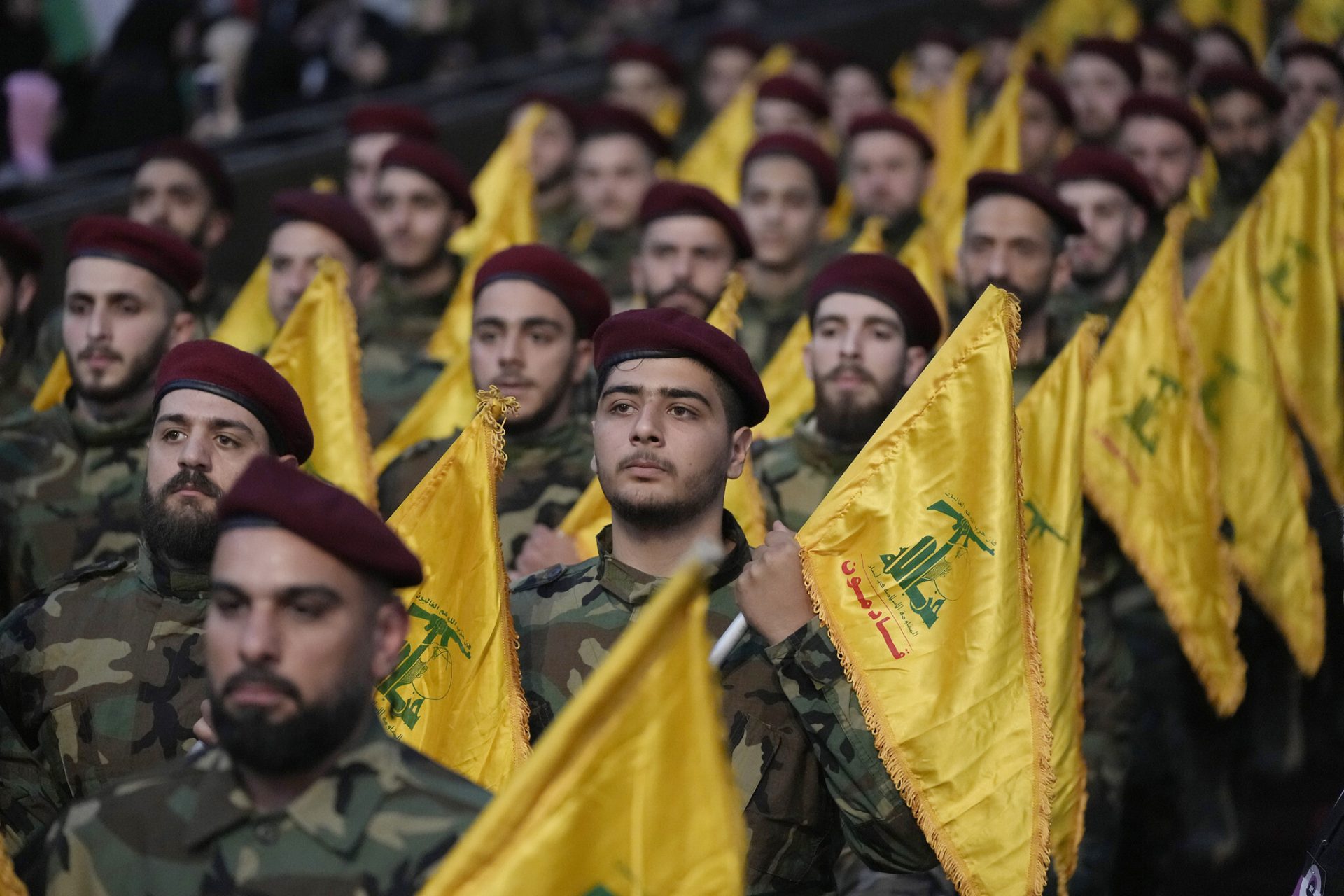This article is the third of a three-part series on Hezbollah. For more information, see Part I: Hezbollah Origins and Ideology and Part II: Hezbollah Politics, Social Services, and Military Capabilities. The series is part of the wider “Understanding” series, aimed at providing the history behind, and context to, the world’s ongoing conflicts and issues in order to increase your understanding of modern world issues.
Ideology in Modernity
While Hezbollah’s ideology is complex and has proven to be dynamic, undergoing a series adaptations over time to Hezbollah’s situation on the ground, their modern ideological basis can be summarized into several main themes:
- Absolute opposition to Israel. This is core to Hezbollah’s identity and ideology and has been since their founding, which was to fight against the Israeli invasion. This opposition is both militaristic and political and extends as far as to reject any and all attempts to negotiate with Israel and any recognition of an Israeli state.
- Opposition to Western influence and presence in the Middle East. Another core aspect of Hezbollah’s ideology is its opposition to the West, both its political influence and the direct presence of troops in the Middle East, particularly from the US. As such, Hezbollah has carried out attacks against US military and political elements in Lebanon and, on occasion, in foreign nations. Hezbollah often links the US and Israel to each other, viewing them as one and the same due to the US’s high level of support for Israel.
- Operating within Lebanese democracy. Hezbollah has made it clear that it intends to operate within the bounds of a Lebanese “consensual democracy.” These so-called democratic values have taken precedence over Hezbollah’s core ideology of Wilayat al-Faqih. While Hezbollah still professes this belief, which would see Lebanon under a system akin to that of Iran, it is seldom mentioned, and Hezbollah makes no meaningful push for it, often professing democracy instead.
- Opposition to sectarianism. Hezbollah remains opposed to what it views as sectarianism ingrained into Lebanese politics. Certain seats in the Lebanese parliament are delegated to certain religious denominations, but so are many positions in the Lebanese government, including the most powerful in the nation. Both the President and Prime Minister are required to belong to a certain denomination. Hezbollah has declared opposition to the sectarianism in the government, and spoken of wishes to remove it altogether, claiming that it “thwarts” the “reform, development and regular updating” of Lebanon.
- Lebanese nationalism. During its 40 years of existence, Hezbollah has come to embody a nationalistic mindset, declaring its victories to be Lebanon’s victories and invoking Lebanon’s name in its messages, statements, and speeches. As mentioned, this nationalism has attracted small levels of support from additional sectors of Lebanese society, including among Christians and Druze.
- Shia Islam. Although Hezbollah has taken this more nationalistic approach, at its core, it is still a Shiite Islamic group. As such, Shia Muslims form the basis of their political supporters and their members, and additionally are the primary beneficiaries of their social services.
- Resistance. With its formation being born through resisting an invading force, resistance has become essential to Hezbollah’s ideology. Through Hezbollah’s messages, social services (which include schools), and political action, Hezbollah pushes for the formation of a “resistance society,” a goal that has been professed by the group since its origins. Hezbollah pushes for a mentality of sacrifice, respect to martyrs, unity in a collective cause, and patriotism.
Hezbollah and Iran: A Deep Relationship
Hezbollah and Iran have been intertwined practically since Hezbollah’s birth. In 1982, following Hezbollah’s formation, Iran sent troops from its Islamic Revolutionary Guard Corps (IRGC) and religious scholars to Lebanon. These Iranian personnel provided both military training and instilled Hezbollah with Iran’s ideology. This support was further bolstered by Iranian funding. Hezbollah and Iran cooperate in many different ways on the world stage, including through attacks, operations in Syria, Hezbollah assisting in training Shiite militants in cooperation with Iran in Iraq, and training Houthi rebels in Yemen.
Hezbollah’s “budget, salaries, expenses, and its food, drink and weapons and missiles [are funded by] the Islamic Republic of Iran. As long as there is money in Iran, then we’ll have money.” -Hezbollah leader Hassan Nasrallah

In Iraq, at the insistence of Iran, Hezbollah sent a force to train militants to fight against the US invasion in 2003. Two of the most prominent groups, Asa’ib Ahl al-Haq and Kata’ib Hezbollah, have been responsible for the deaths of hundreds of coalition soldiers over the years. Both groups hold close relationships with Iran, in particular to Iran’s Quds force.
Estimates vary as to just how much assistance Iran renders to Hezbollah. In 2010, the US estimated that Iran gave Hezbollah between $100-$200 million dollars in funding per year. This number increased sharply by 2018, when the US estimated Iran was giving Hezbollah upwards of $700 million dollars a year. This number has reportedly decreased since 2020 due to declining oil prices, US sanctions, and general economic issues, mostly spurred on by the COVID-19 pandemic. It is presently unclear if Iranian funding for Hezbollah has fully recovered or not, and if it has not, what the current figure for Iranian funding of Hezbollah is.
Hezbollah now finds a loyal ally in Syria, whose army occupied most of Lebanon during the Lebanese Civil War. Hezbollah’s deployment of thousands of fighters—estimates vary from 6,000 to 8,000—helped keep the Assad regime in Syria, extensively supported by an expensive and integrated effort from Iran, afloat. Initially, when the Syrian Civil War erupted in 2011, Nasrallah did not want to deploy troops in order to assist Assad. Nasrallah’s reluctance largely originated from the fact that most of the rebels were Sunni Muslims, and Lebanon has a high Sunni population that Nasrallah did not wish to alienate. However, at the insistence of the current Ayatollah of Iran, Ali Khamenei, Nasrallah relented and deployed Hezbollah soldiers to Syria. In 2019, Hezbollah withdrew many of its forces from Syria, attributing the decision to the Assad regime’s military success.
Syria is vital to the relationship between Hezbollah and Iran. As a friendly state, Syria provides Iran with a land corridor to Lebanon, connecting Tehran to Beirut. The only thing preventing a complete linkage is ISIS remnants in Syria. It is through Syria that many of Iran’s deployments of military equipment to Lebanon take place.
Iran’s support to Hezbollah has ranged from training militants, which takes place in both Iran and Lebanon, to direct arms transfers, to helping Hezbollah make domestic arms manufacturing plants. Iran’s funding facilitates a spectrum of activities, from military operations to supporting the ast network of social services the group provides. Hezbollah claims to have the capabilities to manufacture drones and missiles completely within Lebanon, although they still use Iranian components. Iran has also reportedly assisted Hezbollah in creating a cyber unit, which has allegedly carried out cyber attacks against the US, Europe, various Middle Eastern countries, and UNIFIL in Lebanon.
Due to their deep connection, many refer to Hezbollah as an Iranian proxy. However, this is a title that both Iran and Hezbollah reject.
October 7th, 2023
On October 7th, 2023, Hamas, along with several other militant organizations, launched a massive offensive against Israel. Hamas launched thousands of rockets into Israel in mere hours, and militants breached the Gaza border wall in a number of different locations, entering Israeli territory. The attack killed approximately 1,200 people, mostly civilians, and witnessed a wide array of atrocities. Hamas reportedly captured approximately 250 people, taking them as hostages to Gaza. Hamas militants remained in southern Israel for several days, before they were pushed out of the country by IDF forces that had been slow to respond at first. Since then, Israel has begun a ground invasion of Gaza, determined to destroy Hamas.

While the war rages in the south, the eyes of many have turned north, to the Israel-Lebanon border. While Hezbollah did not pour across the border as its Hamas counterparts did, clashes were frequent. Given the unexpectedness of Hamas’ attack, fears immediately arose that Hezbollah would join in as well. Eager to avoid a repeat of October 7th, Israel mobilized tens of thousands of reservists, many of which were sent to the northern border.
Implications of a Broader War
In the early days of the conflict, when it seemed unclear if Hezbollah would join, Israel reportedly held talks with the White House in which they stated they were considering preemptive strikes against Hezbollah and requested US support in doing so. President Biden, among other prominent officials, reportedly pushed back on the strikes, worried that it would trigger a regional war and additionally skeptical of Israel’s claim that Hezbollah would attack soon. Since then, rocket and mortar fire from Hezbollah has occurred almost daily, and Israeli artillery and airstrikes against Lebanon have been increasing. As of mid-March, at least 4,400 violent incidents between Israel, Hezbollah, and associated militants in both Lebanon and Syria have been recorded since October 7th. Hezbollah, when announcing their strikes, declares them to be in support of the “resistance” and Palestinians of Gaza.
Hezbollah has signaled a willingness to further support Hamas in the war, which could pose a serious challenge for Israel and trigger further regional instability. Should Israel go to war with Hezbollah, the war in Gaza could pale in comparison. Hezbollah is significantly better equipped, trained, and some experts argue, even more motivated than Hamas. Hezbollah has legitimate combat experience in urban settings, although their experience is largely against irregular forces, rather than a professional army such as Israel. Hezbollah boasts extensive militaristic capabilities, a decentralized command structure that allows its infantry to operate effectively, an array of defensive structures, and extreme mobility. These factors would make any offensive Israel might make into Lebanon extremely difficult. Conversely, the effectiveness of Hezbollah in any offensive against Israel is questionable, although the group would almost certainly attempt to seize territory in northern Israel in the event of a war, as Nasrallah has stated his intention to do so.

Hezbollah’s capabilities have grown exponentially since the 2006 war, in which they performed remarkably well. However, so have Israel’s. Israel boasts some of the most advanced military technology in the world, in particular in its air power. Hezbollah has also increased its air defense capabilities. However, they are still, compared to Israel’s air offensive capabilities, lacking.
The war in Gaza puts Hezbollah in a difficult position.
On one hand, its portrayal of itself as a resistance group whose stated goal is to have Israel “obliterated” (as was said in their 1985 open letter) gives them a silent obligation to intervene in what is happening in Gaza. On the other hand, they also have Lebanon to think about. Hezbollah has been described as a “state within a state,” not just because of the military they operate but because of its embedment into Lebanese society in both cultural and governmental aspects.
Except for its core support base, any war with Israel is likely to plummet Hezbollah’s perceived popularity due to the extreme cost the war would have on Lebanon. Not only would a war be extremely costly in lives, but it would also bring widespread destruction to Lebanon’s infrastructure, which already suffered extensively due to permeating conflict in recent decades, and further diminish the already struggling economy, potentially collapsing the economy completely.
It is unclear at this time what the ‘red lines’ are for either side. However, it is certainly in the best interests of both parties and the region as a whole to avoid a war. Even if the war stayed between Hezbollah and Israel, it would be extremely costly for both Lebanon and Israel.
Understanding Hezbollah
Pivotal to understanding modern global issues, it’s essential to grasp the historical context behind them. The current war in Gaza, with its extensive history, has brought Hezbollah to the forefront in shaping the future of the region. The prospect of war between Israel and Hezbollah is alarming, as it is likely to result in high casualties on both sides and could escalate the conflict beyond Israel, Hamas, and other militant groups in Gaza, threatening to draw the US and regional powers into a broader war.

If a war between Israel and Hezbollah occurs, US support for Israel, which has been under attack from segments of US and global society, would still be likely to increase. This heightened support could potentially put US troops in the Middle East at risk from Hezbollah attacks. President Joe Biden’s personal sense of commitment to Israel, cemented over decades of close contact with Israeli leaders, could be a part of why diplomacy in the region has not shifted greatly under his administration. “Biden considers himself to be part of Israel’s story; he has been involved for so long,” said Aaron David Miller, a former State Department negotiator on the Middle East now at the Carnegie Endowment for International Peace.
Hezbollah has positioned itself as a powerful entity, militarily and politically, both within Lebanon and across the region. However, the political situation in Lebanon is dynamic, and Hezbollah’s influence may wane as dissatisfaction among the Lebanese population grows. In 2022, a significant number of independent and anti-establishment candidates emerged, highlighting widespread beliefs that the government is inefficient and corrupt. Additionally, despite Hezbollah’s efforts to bolster credibility on its home front, many Lebanese distrust the group for its alleged involvement in the 2020 Beirut port explosions, which killed over two hundred people. A judicial probe into the blasts is investigating several Hezbollah-backed politicians for suspected negligence, though it has repeatedly stalled due to obstruction from Hezbollah and other political factions.
Despite these challenges, Hezbollah’s significant military strength indicates its intent to maintain its current position in the Middle East and the world order.

